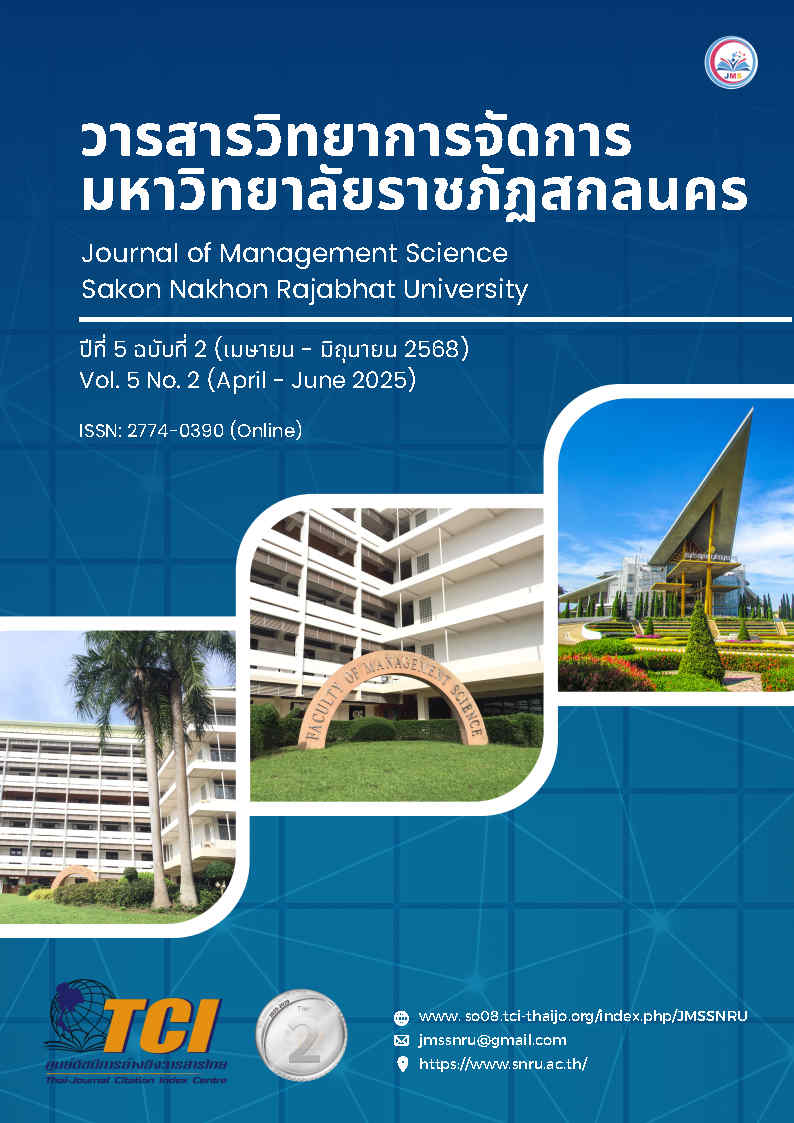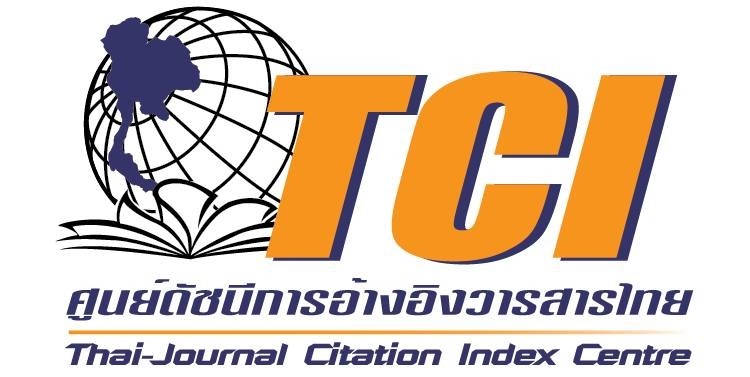การวิเคราะห์องค์ประกอบเชิงยืนยันอันดับที่สองของโมเดลภาวะผู้นำตามหลัก พรหมวิหาร 4 สำหรับผู้บริหารสถานศึกษาสังกัดสำนักงานเขตพื้นที่ การศึกษาประถมศึกษาร้อยเอ็ด เขต 3
คำสำคัญ:
ภาวะผู้นำ, หลักพรหมวิหาร 4, ผู้บริหารสถานศึกษาบทคัดย่อ
การวิจัยครั้งนี้มีวัตถุประสงค์คือ 1) เพื่อศึกษาองค์ประกอบและตัวบ่งชี้ภาวะผู้นำตามหลักพรหมวิหาร 4 สำหรับผู้บริหารสถานศึกษาสังกัดสำนักงานเขตพื้นที่การศึกษาประถมศึกษาร้อยเอ็ด เขต 3 2) เพื่อตรวจสอบความเที่ยงตรงเชิงโครงสร้างหรือทฤษฎีและความเชื่อมั่นเชิงโครงสร้างหรือทฤษฎีของโมเดลภาวะผู้นำตามหลักพรหมวิหาร 4 กลุ่มตัวอย่าง คือ ผู้บริหารและครู จำนวน 502 คน เครื่องมือวิจัย คือ แบบสอบถามแบบมาตราส่วนประมาณค่า 5 ระดับ มีค่าความเชื่อมั่นเท่ากับ .969 สถิติที่ใช้ ได้แก่ ค่าเฉลี่ย ร้อยละ ส่วนเบี่ยงเบนมาตรฐาน และสถิติการวิเคราะห์องค์ประกอบเชิงยืนยัน ผลการวิจัยพบว่า 1) การวิเคราะห์องค์ประกอบเชิงยืนยันอันดับสองของโมเดลภาวะผู้นำตามหลัก พรหมวิหาร 4 ของผู้บริหารสถานศึกษา สังกัดสำนักงานเขตพื้นที่การศึกษาประถมศึกษาร้อยเอ็ด เขต 3 มี 4 องค์ประกอบ 12 ตัวบ่งชี้ มีค่าเฉลี่ยอยู่ระหว่าง 4.02-4.69 ส่วนเบี่ยงเบนมาตรฐานอยู่ที่ .56 - .92 ค่าอำนาจจำแนกอยู่ระหว่าง .291 - .756 2) ตรวจสอบความเที่ยงตรงเชิงโครงสร้างหรือทฤษฎีและความเชื่อมั่นเชิงโครงสร้างหรือทฤษฎีของโมเดลภาวะผู้นำตามหลักพรหมวิหาร 4 พบว่า ค่าน้ำหนักขององค์ประกอบทุกตัวมีนัยสำคัญทางสถิติที่ระดับ .01 เรียงจากมากไปน้อย ได้แก่ 2.1) ภาวะผู้นำด้านกรุณา 2.2) ภาวะผู้นำด้านเมตตา 2.3) ภาวะผู้นำด้านมุทิตา และ 2.4) ภาวะผู้นำด้านอุเบกขา มีค่าน้ำหนักองค์ประกอบ (λ) อยู่ระหว่าง .577-.734 มีความเที่ยงตรงเชิงโครงสร้าง หรือความเที่ยงตรงตามทฤษฎี เป็นไปตามเกณฑ์ มีความเชื่อมั่นเชิงโครงสร้าง อยู่ระหว่าง .412 - .890 แสดงว่าโมเดลมีความสอดคล้องกลมกลืนกับข้อมูลเชิงประจักษ์
เอกสารอ้างอิง
นงลักษณ์ วิรัชชัย. (2542). โมเดลลิสเรลสถิติวิเคราะห์สำหรับการวิจัย. กรุงเทพฯ: โรงพิมพ์ จุฬาลงกรณ์ มหาวิทยาลัย.
นวรัตน์ ไวชมภู และรพีพรรณ สุวรรณณัฐโชติ. (2560). วิถีครองคน: พรหมวิหาร 4 สำหรับผู้บริหารการศึกษาในศตวรรษที่ 21. วารสารมหาวิทยาลัยนราธิวาสราชนครินทร์, 4(1),105-113.
พระธรรมปิฎก (ป.อ. ปยุตโต). (2553). พระพุทธศาสนาพัฒนาคนและสังคม. กรุงเทพฯ: กองการพิมพ์ฝ่ายประชาสัมพันธ์ กฟผ.
พระพรหมคุณาภรณ์ (ป.อ. ปยตุโต). (2559). ภาวะผู้นำ: ความสำคัญต่อการพัฒนาคนพัฒนาประเทศ. กรุงเทพฯ: ธรรมสภา.
ราชบัณฑิตยสถาน. (2525). พจนานุกรม ฉบับราชบัณฑิตยสถาน พ.ศ. 2525. กรุงเทพฯ: อักษรเจริญทัศน์.
สํานักการศึกษา กรุงเทพมหานคร. (2552). พระไตรปิฏก (ฉบับเรียนพระไตรปิฏก). โครงการสนับสนุนการสอนในศูนย์ศึกษาพระพุทธศาสนาวันอาทิตย์.
สำนักงานเขตพื้นที่การศึกษาประถมศึกษาร้อยเอ็ดเขต 3. (2566). รายงานผลการบริหารและพัฒนาทรัพยากรบุคคล ประจำปีงบประมาณ 2565. สืบค้น 1 กุมภาพันธ์ 2566, จาก https://roiet3.go.th/2023/01/05/05-01-66.
ดาวน์โหลด
เผยแพร่แล้ว
รูปแบบการอ้างอิง
ฉบับ
ประเภทบทความ
สัญญาอนุญาต
ลิขสิทธิ์ (c) 2025 วารสารวิทยาการจัดการ มหาวิทยาลัยราชภัฏสกลนคร

อนุญาตภายใต้เงื่อนไข Creative Commons Attribution-NonCommercial 4.0 International License.
บทความที่ตีพิมพ์ในวารสารวิทยาการจัดการ มหาวิทยาลัยราชภัฏสกลนคร เป็นทัศนะ ลิขสิทธิ์ และความรับผิดชอบของผู้เขียนเจ้าของผลงาน






